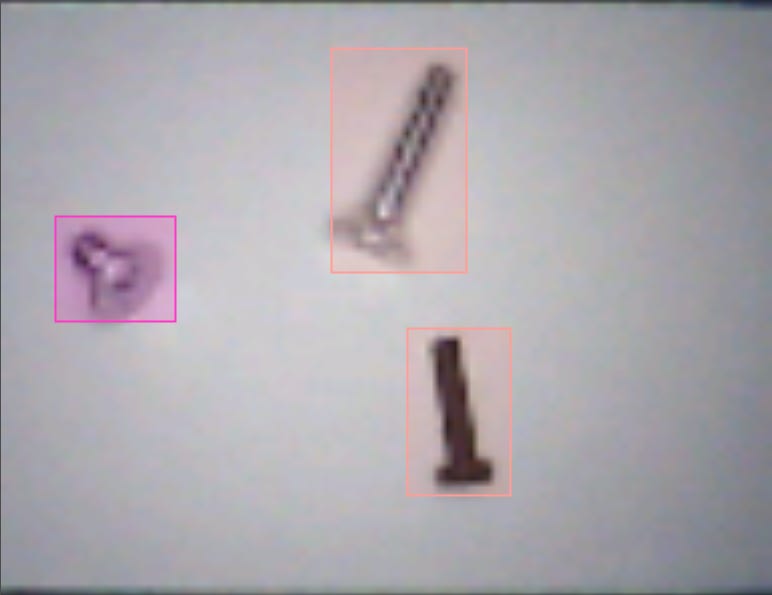Running YOLOv5 on a Microcontroller
Optimizing YOLOv5 for ESP32: A Guide to Running AI on Microcontrollers
Hey ! This is where I share stuff about design, engineering of everyday things. Subscribe to get it all in your inbox! 😉
YOLO (You Only Look Once) is a fast AI model for detecting objects in images or videos, typically run on powerful machines due to its high computational demands (>160MB for YOLOv5).
Running YOLO on small devices like microcontrollers could open up cool use cases, like spotting defects in factories or provide visual assistance in smart wearables.
In this post, I’ll show you how I got a simplified YOLOv5 model running on an ESP32 microcontroller, cutting it down to just 23KB while keeping it fast and efficient.
YOLOv5 on Embedded Devices: The Challenge
YOLOv5 from Ultralytics follows a Backbone, Neck, and Head architecture:
The Backbone is responsible for extracting features from the input image at different resolutions, scales or levels.
The Neck combines features from different levels of the backbone.
The Head generates bounding boxes and class predictions based on the features extracted by the backbone and neck.
A more detailed architecture can be found in the YOLOv5 documentation.
The model is quite complex and the smallest version from Ultralytics is a few MBs. However, the ESP32 microcontroller has just 4MB of flash memory and 8MB of PSRAM, making it impossible to run the full model without optimizations.
Use Case: Screw Type Detection
The first step to simplifying YOLOv5 was to define a specific use case with fixed conditions that could be optimized for. I focused on detecting screw types (e.g., “Big,” “Medium,” “Black”) using an ESP-EYE module. The constraints were as follows:
Images were 96x96 pixels: After some tests, I found that this resolution was minimum to detect the screws with acceptable accuracy and speed on the deployed hardware.
The camera and screws were at a fixed distance: This allowed me to have fixed sizes, so I didn’t have to look for objects at different scales or levels.
These constraints simplified the problem, making it easier to reduce the model size.
How I Simplified the Model
Reduce Input Size: Input images were resized to 96x96 pixels, reducing the parameters and memory usage.
Simplify the Backbone: I reduced the number of layers and filters by trial and error, keeping acceptable accuracy while cutting computational demands.
Simplify the Head: Removed multi-scale predictions since the object sizes were fixed.
Quantize the Model: Converted weights and activations from float32 to uint8, reducing memory usage.
In the picture below, I have marked in red the flow of the block I keep from the original YOLOv5 model:
The simplified model had fewer layers and filters, making it suitable for the ESP32 microcontroller.
Result: After these optimizations, the model shrank to a mere 23KB with quantization:
model_format : uint8
params # : 23,066 items (23.70 KiB)
----------------------------------------------------------
input 1/1 : 27.00 KiB, (1,96,96,3)
output 1/1 : 3.38 KiB, (1,432,8)
macc : 6,532,528
weights (ro) : 24,276 B (23.71 KiB)
activations (rw) : 36,864 B (36.00 KiB) (1 segment)
ram (total) : 67,968 B (66.38 KiB) = 36,864 + 27,648 + 3,456
You can reproduce these results using my project repository.
Lessons Learned
Fixed Scenarios Simplify the Problem: The controlled environment (fixed camera and object size) allowed me to remove unnecessary complexity.
Quantization is Key: Converting the model to uint8 saved both memory and computational resources, critical for microcontrollers.
Iterative Testing Works: Simplifying the backbone and head required experimentation, balancing size with accuracy.
Conclusion
By choosing a specific use case, reducing input size, simplifying the architecture, and quantizing the model, I was able to run YOLOv5 on a resource-constrained ESP32 microcontroller. This process demonstrates how deep learning can extend to edge devices, even with strict memory and processing limits. I hope this inspires you to explore similar optimizations for your embedded projects!
If you’re finding this newsletter valuable, share it with a friend, and consider subscribing if you haven’t already.
Cheers,
Daniel! 😉






